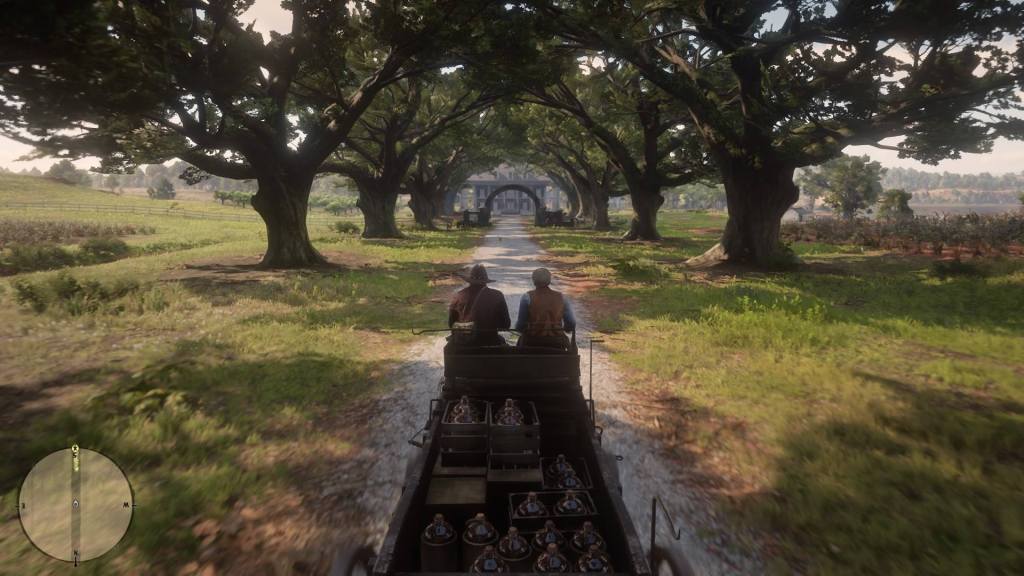Spoiler Warning: This article does contain some mild spoilers regarding people, places, and events throughout Red Dead Redemption 2.
Red Dead Redemption 2 is the biggest game of the year, launching to the most profitable opening weekend of any entertainment property in history. It’s also a walking simulator.
At least that was the argument that YouTube essayist Mark Brown made in a since-deleted tweet. “So it turns out gamers actually do like walking simulators, but only if they’re about cowboys and not about women,” the Game Maker’s Toolkit creator (who is one of the best critics working today, though I am about to mildly disagree with him) wrote on November 1.
The tweet was a reference to the angry reception that breakthrough walking simulator, Gone Home, received in some circles. Check the comments on any article or tweet about Gone Home today, and you’ll find more of the same. Some gamers just don’t buy that The Fullbright Company’s game is, in fact, a game.
Gone Home cast players as Katie Greenbriar, a college student visiting her family’s new home in Boon County, OR, after returning from a semester abroad. Upon arrival, Katie finds that all of her family members are missing. After reading a note that her sister, Samantha, left on the front door, Katie begins exploring the new house, piecing together the story of what became of her family through scraps of paper, audio logs, and other bits of environmental storytelling.
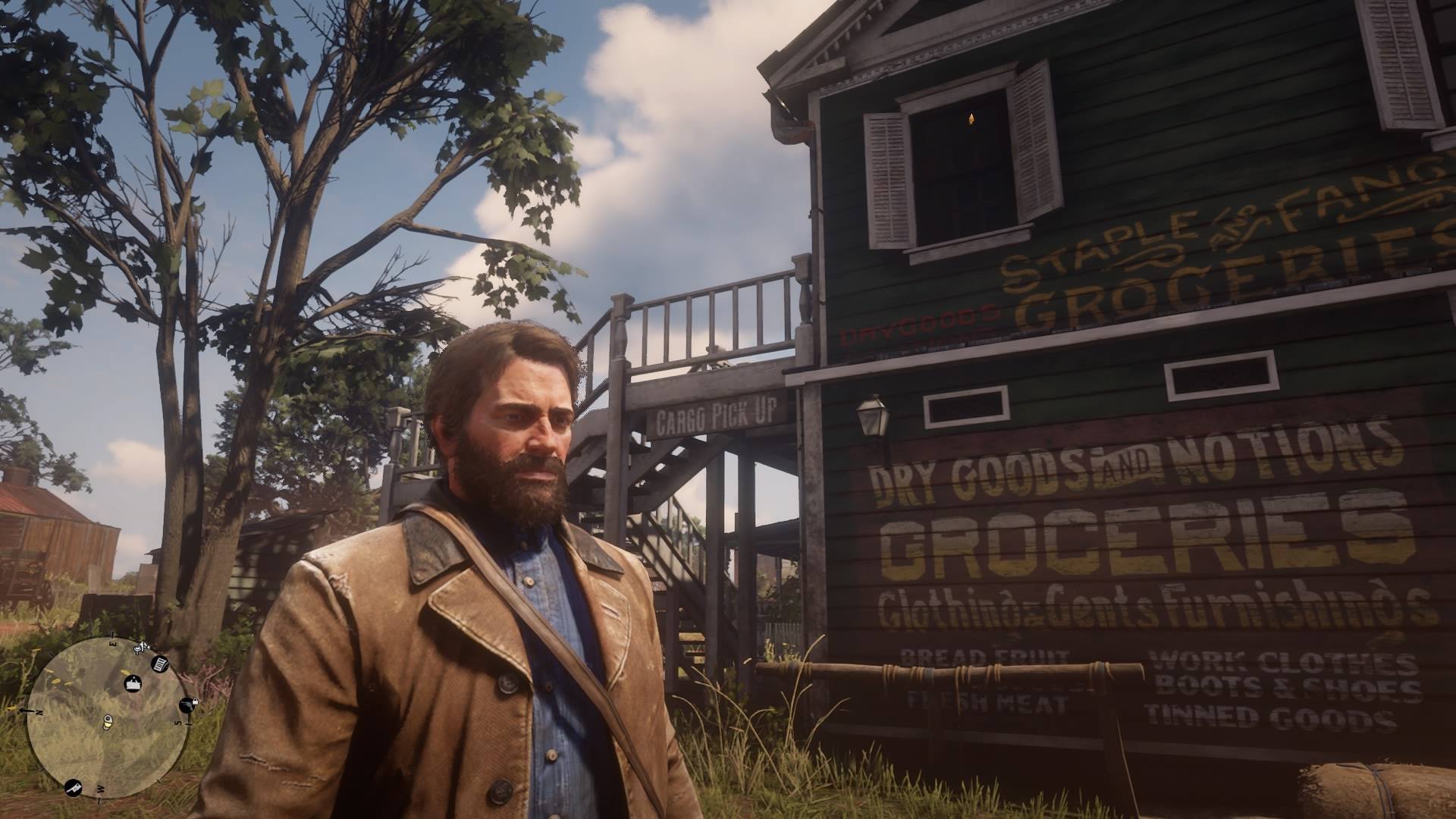
A Familiar Loop
If you’re playing Red Dead Redemption 2, that loop should sound familiar. In the side quest “The Iniquities of History,” Arthur meets a washed-up old man, Jeremiah Compson, sitting on a bench in the town of Rhodes. Compson gripes that his home has been seized by the court, and that he’s been forced to camp in the hills outside of the town. He just wants a few of his valuables back. Arthur agrees—at least my Arthur did—to go to his house and recover his pistol, pocket watch, and an old ledger.
In the hills outside of Rhodes, you’ll find Compson’s abandoned home. Boards cover the windows. An eviction notice is posted by the door. Break the door down and you’ll find that, as in Gone Home, pieces of paper litter the house. Explore further (and take out a pair of squatters) and you’ll find Compson’s ledger. The items listed in the document aren’t goods, but people.
As you assemble the pieces, you’ll realize that Compson was a slave catcher, let go from the plantation that employed him after the Civil War made the abolition of slavery a reality in the South.
From there you head back to Compson’s camp, confront him and throw the ledger in his campfire. Compson falls to his knees, weeping for his lost past. It’s a powerful quest, and one that relies on the exact mechanics that Gone Home used to tell its story. This time, they’re just nestled in along the gun fights and waypoint-following of a AAA open world game.
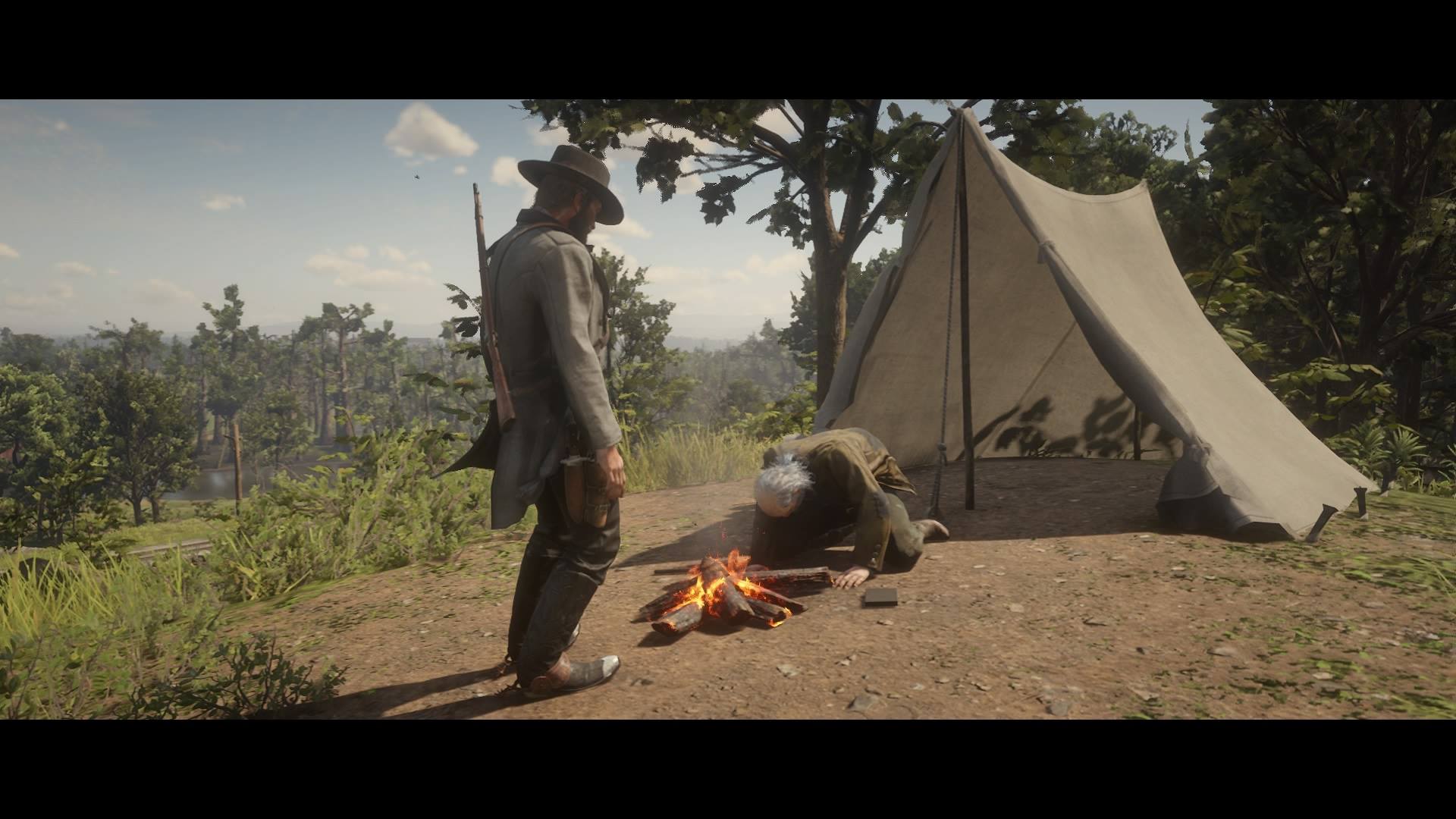
Slow in Every Way
Even outside of the odd quest like this, Red Dead Redemption 2 often borrows from the walking simulator formula. Like the player character in Arbitrary Metric’s Paratopic, Arthur walks painfully slowly. Though players can shoot, stab, rob, and hijack trains in RDR2, Arthur’s default walk speed, and the awkwardness with which he performs those actions, suggests that Rockstar’s highest priority was ensuring the player soak in this world.
To that end, a ridiculous amount of items in the environment are rendered in painstaking detail. Herbs you pick have bespoke root systems anchoring them in the ground. The ammunition and suspenders and horse tonics you purchase are displayed in gorgeously illustrated catalogs. You gain insight on the main and side story by reading Arthur’s tortured thoughts in his scrawled thickly in his journal. Red Dead Redemption 2 focuses on building its world through interactive objects in the environment exactly how walking simulators do.
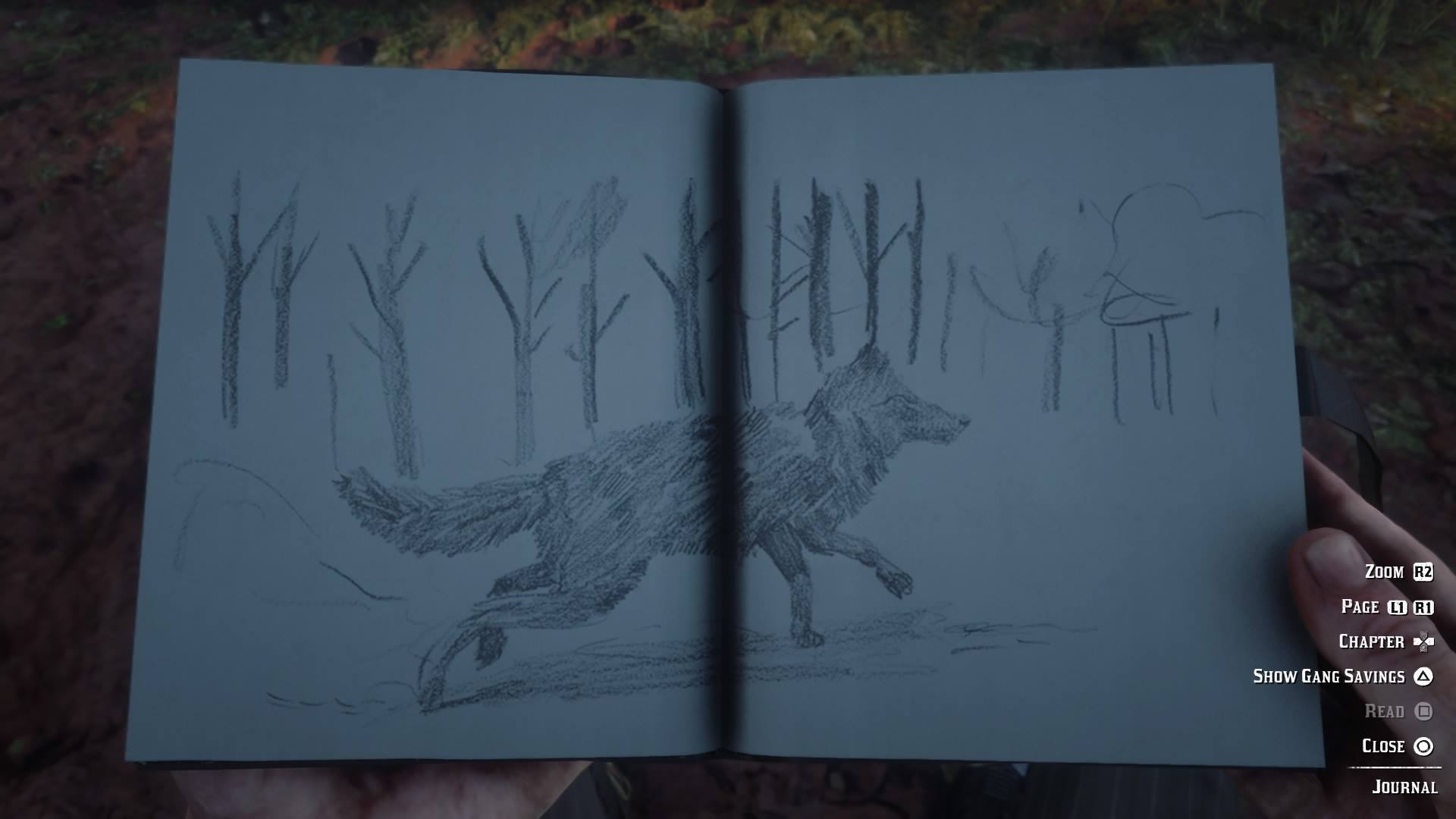
That said, I don’t think you can make a serious argument that a giant open world action game with train heists, stage coach robberies, hunting, fishing, and stabbing belongs to a genre primarily defined by nonviolent exploration. That said, Red Dead Redemption 2 has an awful lot in common with the walking simulator’s parent genre: the immersive sim.
Red Dishonored Redemption?
The immersive sim is one of the lesser known genres in gaming, partially, at least, because it’s hard to identify. Most genres are defined by one characteristic. The FPS puts a gun in your hand and asks you to shoot. Platformers want you to jump your way from A to B. Puzzle games ask you to solve puzzles. The immersive sim, on the other hand, is a loosely defined beast. There are a few characteristics, however, that are pretty standard.
For one, immersive sims share the walking sim’s focus on environmental storytelling. In immersive sims, though, this storytelling is done against the backdrop of a violent world. I can’t tell you how many times I’ve been interrupted by a splicer attack while listening to one of BioShock’s thoughtful audio logs. Bad things happen in immersive sims. The player typically finds interesting tidbits of storytelling by sifting through the rubble of a ruined world (like, for example, Compson’s home).
Play Your Way, Partner
Secondly, the immersive sim takes a play-your-way approach to design. In standard immersive sims like Dishonored and Deus Ex, players possess a variety of tools which allow for multiple playstyles. For example, Dishonored gives players lethal bolts and non-lethal stun darts. As Deus Ex’s J.C. Denton, you can kill enemies out in the open, inciting gun fights, or strike from the shadows, piling bodies up in dark corners.
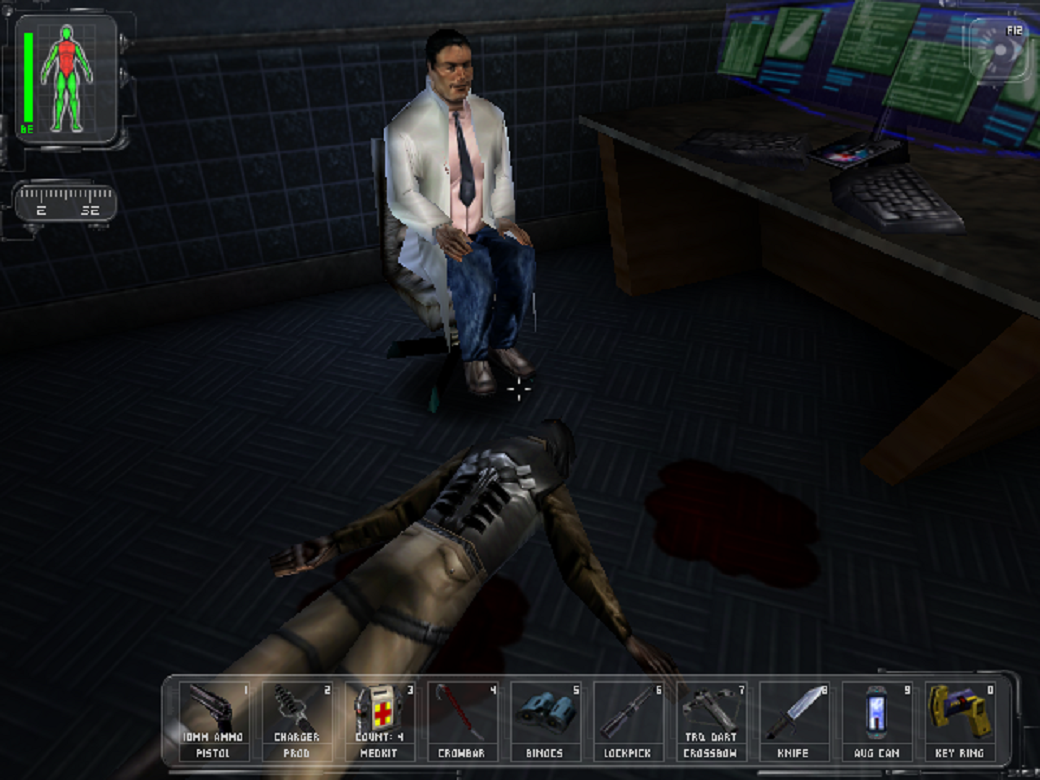
RDR2 takes this system and applies it to a vast open world, peppered with thousands of decisions to make. Each will affect your playstyle and Arthur’s morality. Encounters can be approached stealthily or guns blazing. The game frequently asks you to decide which gang member to send into a fight first. An Honor system tracks all of these decisions and determines the ending Arthur receives at the end of it all.
Finally, immersive sims emphasize emergence. Games like BioShock and Prey have pre-written stories which the developers carefully crafted. But, they also make space for unique stories to emerge as the player interacts with the game’s systems and the game’s systems interact with each other. Red Dead Redemption 2 has this kind of storytelling in spades. Just shoot an unarmed citizen on a crowded street in Saint Denis, and watch the game respond.
In short, Red Dead Redemption 2 isn’t a walking simulator. But, Rockstar’s latest is descended from a proud lineage of games that make player choice, emergence, and environmental storytelling a high priority.
The game doesn’t tell you that Compson was a slave catcher. All those papers—save the ledger—are optional pickups. Piecing the story together is your job. And for moments in Red Dead Redemption 2—just like in Gone Home—that’s all the gameplay you need.
